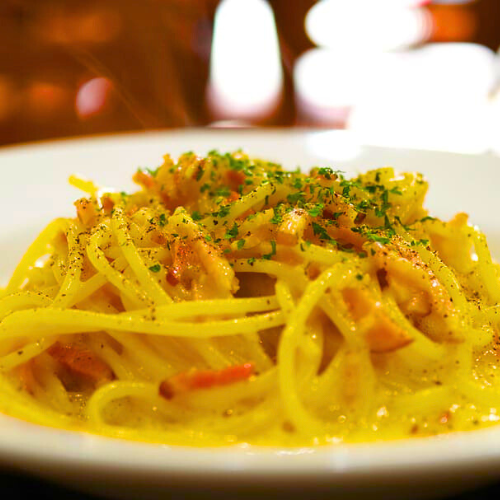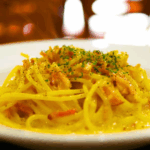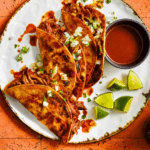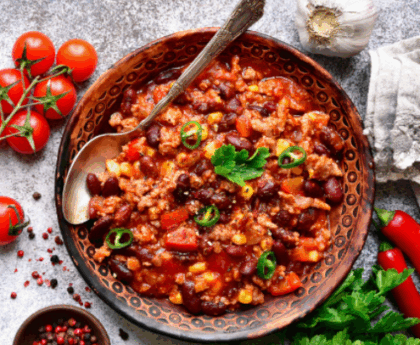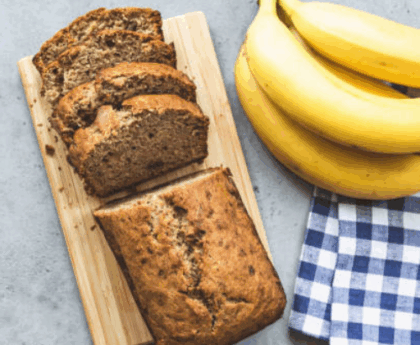How to Make an Authentic Carbonara? The Ultimate Step-by-Step Guide
How to Make an Authentic Carbonara? Carbonara is one of the most beloved pasta dishes worldwide, celebrated for its creamy texture, smoky flavor, and simple ingredients. Yet, it’s also one of the most misunderstood. Many versions include cream, garlic, or even peas—none of which belong in a traditional Roman carbonara.
In this comprehensive guide, you’ll learn how to make an authentic carbonara just like they do in Rome. From choosing the right ingredients to mastering the technique, we’ll cover everything you need to know.
Table of Contents
- What is Carbonara?
- Origins of Carbonara
- Essential Ingredients for Authentic Carbonara
- Equipment You’ll Need
- How to Make Authentic Carbonara: Step-by-Step
- Common Mistakes to Avoid
- Variations of Carbonara
- Serving Suggestions
- Storage and Reheating Tips
- Frequently Asked Questions
What is Carbonara?
Carbonara is a traditional Italian pasta dish from Rome, made with eggs, Pecorino Romano cheese, guanciale (cured pork cheek), black pepper, and pasta. The magic of carbonara lies in the emulsion created by the fat from the guanciale and the starchy pasta water, which blends with the egg and cheese to form a velvety sauce.
Unlike some interpretations, authentic carbonara contains no cream, butter, or garlic. The richness comes purely from the eggs and cheese.
Origins of Carbonara
The origins of carbonara are somewhat debated, but most food historians agree that it emerged in Rome in the mid-20th century. Some believe it was inspired by dishes prepared for American soldiers during World War II, using ingredients they had on hand like bacon and eggs.
Others trace it to the “carbonari” — Italian charcoal workers — who needed simple, high-calorie meals that could be made with shelf-stable ingredients.
Regardless of its precise origin, carbonara has become a cornerstone of Roman cuisine and a favorite worldwide.
Essential Ingredients for Authentic Carbonara
To make authentic carbonara, the quality and authenticity of your ingredients are crucial. Here’s what you need:
1. Guanciale
- What it is: Cured pork cheek, known for its rich, fatty texture and deep umami flavor.
- Substitutions: Pancetta (less ideal), bacon (least authentic).
2. Pecorino Romano
- A hard, salty sheep’s milk cheese from Lazio.
- Do not substitute with Parmesan, as Pecorino’s sharpness is essential.
3. Eggs
- Use fresh, room-temperature eggs.
- Traditional recipes use only egg yolks for richness, while some use a whole egg plus extra yolks.
4. Black Pepper
- Freshly cracked black pepper is key for both flavor and aroma.
5. Pasta
- Spaghetti is the traditional choice, but rigatoni or bucatini are also acceptable.
- Use high-quality dried pasta made with 100% semolina.
Equipment You’ll Need
To make carbonara perfectly, you need some basic kitchen equipment:
- Large pot for boiling pasta
- Large skillet for rendering the guanciale
- Mixing bowl for preparing the egg and cheese mixture
- Tongs for transferring pasta
- Microplane or grater for finely grating the Pecorino Romano
- Pepper mill for freshly cracked pepper
How to Make Authentic Carbonara: Step-by-Step
Step 1: Prepare the Ingredients
- Cut guanciale into small strips or cubes (~1/4 inch).
- Grate Pecorino Romano finely to help it melt smoothly.
- Separate eggs: Use 3 egg yolks and 1 whole egg for every 400 grams of pasta.
Step 2: Cook the Pasta
- Bring a large pot of salted water to a boil.
- Add the pasta and cook until just shy of al dente (about 1 minute less than package instructions).
- Reserve at least 1 cup of pasta water before draining.
Step 3: Render the Guanciale
- Place the guanciale in a cold skillet.
- Heat over medium-low heat.
- Cook until the fat renders out and the meat becomes crispy (about 7-10 minutes).
- Remove from heat.
Step 4: Prepare the Egg and Cheese Mixture
- In a bowl, combine the egg yolks, whole egg, and most of the grated Pecorino (save some for garnish).
- Add a generous amount of freshly cracked black pepper.
- Mix until smooth and creamy.
Step 5: Combine Pasta with Guanciale
- Add the drained pasta to the skillet with guanciale.
- Toss to coat the pasta with the rendered fat.
- Allow it to cool for 30-60 seconds to avoid scrambling the eggs.
Step 6: Create the Sauce
- Gradually add the egg and cheese mixture to the pasta, off the heat.
- Toss vigorously to create an emulsion.
- Add reserved pasta water a little at a time to adjust consistency.
Step 7: Serve Immediately
- Plate the pasta.
- Top with extra Pecorino Romano and more black pepper.
Common Mistakes to Avoid
❌ Adding Cream
- Authentic carbonara is never made with cream. The creamy texture comes from the emulsion of eggs, cheese, and fat.
❌ Overheating the Eggs
- Adding the eggs while the pasta is too hot will cause them to scramble. Always remove the pan from heat.
❌ Skipping Guanciale
- Bacon or pancetta will do in a pinch, but guanciale provides the authentic flavor.
❌ Using Pre-Grated Cheese
- Always grate cheese fresh for better melting and flavor.
Variations of Carbonara
While purists argue that authentic carbonara should never be altered, several variations have emerged globally:
✅ Vegetarian Carbonara
- Replace guanciale with smoked mushrooms or sun-dried tomatoes.
✅ Non-Traditional Proteins
- Some chefs use pancetta or even smoked salmon, but these deviate from Roman tradition.
✅ Pasta Alternatives
- Try bucatini for a chewier experience or rigatoni to hold more sauce.
Remember: these are variations—not authentic carbonara.
Serving Suggestions
Carbonara is traditionally a standalone dish, but you can pair it with:
- A crisp white wine like Pinot Grigio
- A simple green salad with lemon vinaigrette
- Crusty Italian bread to soak up any remaining sauce
For dessert, a classic Tiramisu complements the meal beautifully.
Storage and Reheating Tips
Carbonara is best enjoyed immediately, but if you must store leftovers:
- Store in an airtight container in the refrigerator for up to 2 days.
- Reheat gently in a skillet over low heat, adding a splash of water to loosen the sauce.
Avoid microwaving, as it can scramble the eggs.
Frequently Asked Questions (FAQ)
❓ What pasta is best for carbonara?
Spaghetti is the traditional choice, but bucatini and rigatoni are also commonly used. The key is to use a pasta shape that holds sauce well.
❓ Can I use bacon instead of guanciale?
Technically, yes, but bacon is not authentic. Guanciale has a higher fat content and a distinct flavor that defines carbonara.
❓ Is it safe to eat raw eggs in carbonara?
The eggs are gently cooked by the heat of the pasta, reducing the risk of foodborne illness. To be extra safe, use pasteurized eggs.
❓ Should I add cream to carbonara?
No! Authentic carbonara contains no cream. The sauce’s creamy texture comes solely from the emulsion of egg, cheese, and pasta water.
❓ How do I prevent the eggs from scrambling?
Always mix the egg and cheese off the heat and let the pasta cool for 30-60 seconds before adding the egg mixture. Toss vigorously to form the sauce.
❓ Can I make carbonara ahead of time?
Carbonara is best enjoyed fresh. The sauce can seize up or become grainy if made ahead and reheated improperly.
❓ What cheese is best for carbonara?
Use Pecorino Romano—its salty, sharp flavor is essential to authentic carbonara. Parmesan is not a suitable substitute.
❓ How much black pepper should I use?
Carbonara traditionally has a generous amount of black pepper. Adjust to taste, but freshly cracked pepper is key to the flavor profile.
❓ Is carbonara a heavy dish?
While it is rich due to the egg yolks and guanciale fat, carbonara is not heavy in portion sizes. Serve it in modest portions as is typical in Italy.
❓ Can I use whole eggs instead of yolks?
Some recipes use a combination of whole eggs and yolks for balance, but using mostly yolks creates a creamier, richer sauce.
Conclusion
Making an authentic carbonara is a rewarding experience that requires just a few ingredients and some careful technique. Remember: no cream, no garlic—just eggs, cheese, guanciale, pepper, and pasta.
By following the steps in this guide, you’ll be able to create a restaurant-quality carbonara in your own kitchen that honors Roman culinary tradition.
Now that you know how to make an authentic carbonara, why not try it tonight? Your taste buds will thank you!
✅ If you found this guide helpful, consider sharing it with friends or bookmarking it for your next pasta night.
📌 Bonus: Quick Recipe Card
Ingredients:
- 400g spaghetti
- 150g guanciale
- 100g Pecorino Romano
- 3 egg yolks + 1 whole egg
- Freshly ground black pepper
Instructions:
- Boil pasta, reserve water.
- Render guanciale until crispy.
- Mix eggs, Pecorino, and pepper.
- Toss pasta with guanciale fat.
- Off heat, add egg mixture; toss with pasta water.
- Serve with extra cheese and pepper.
Keywords optimized for SEO:
- How to make an authentic carbonara
- Traditional carbonara recipe
- Authentic Roman carbonara
- Carbonara without cream
- Guanciale vs pancetta
- Best pasta for carbonara
- Italian carbonara tips
- Carbonara common mistakes

